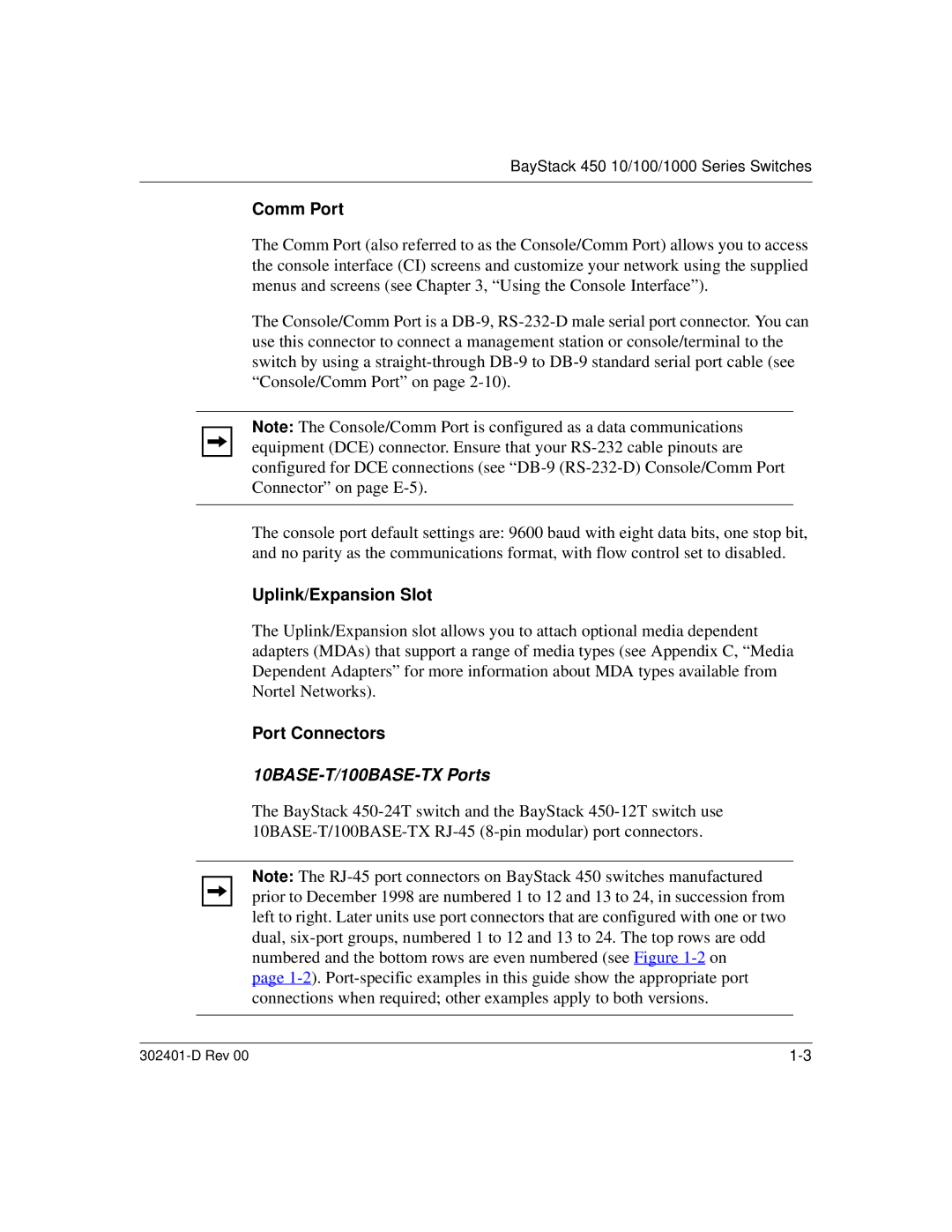
BayStack 450 10/100/1000 Series Switches
Comm Port
The Comm Port (also referred to as the Console/Comm Port) allows you to access the console interface (CI) screens and customize your network using the supplied menus and screens (see Chapter 3, “Using the Console Interface”).
The Console/Comm Port is a
Note: The Console/Comm Port is configured as a data communications equipment (DCE) connector. Ensure that your
The console port default settings are: 9600 baud with eight data bits, one stop bit, and no parity as the communications format, with flow control set to disabled.
Uplink/Expansion Slot
The Uplink/Expansion slot allows you to attach optional media dependent adapters (MDAs) that support a range of media types (see Appendix C, “Media Dependent Adapters” for more information about MDA types available from Nortel Networks).
Port Connectors
10BASE-T/100BASE-TX Ports
The BayStack
Note: The
page
|
